Introduction
The subject of this essay is based on a famous civil/structural engineer. Structural Engineering is a field which is concerned with doing research, making plans, designing, constructing, inspecting, monitoring, maintaining, rehabilitating and demolishing of both temporary and permanent structures, along with their components and structural systems. It also considers various aspects of the structures like economic, technical, aesthetic, environmental and social aspects. This is an imaginative profession which makes a significant contribution to industry, infrastructure as well as to developments of recreational and residential nature. (EA, n.d.)
For the purpose of the essay, the person who has been chosen is Peter Rice who was a famous structural engineer, called by Jonathan Glancy, an architecture critic as ‘The James Joyce of structural engineers’. (Arup, n.d.)
He was born in Ireland in 1935. He obtained his early education at the local CBS after which he went to Newbridge College. From Newbridge College, Peter proceeded to Queen’s University Belfast from where he studied Civil Engineering. After receiving the primary degree in engineering, Peter went for further studies to Imperial College in London where he spent a year. In 1956, after completion of studies, he joined Ove Arup and Partners and started working with them on the Sydney Opera House. He also worked as a visiting scholar at Cornell University, after completion of the Sydney Opera House. (Clerkin, P. 2008)
What makes the work of Peter Rice unique is that he has the ability to step out of the limits and constraints which formed a part of his professional training; as a result he was proficient in deriving practical solutions from technical problems. What differentiate his work are his designs which combine order with delight and science with art in a graceful and smooth manner creating amazing structures. The essence of his work rests with the fact that he adopted a fresh approach for each of his new projects, which resulted in producing the best possible building; this was further enhanced by respecting for the part that the architect plays. After a few initial trials and with the passage of time, this approach yielded an inspirational collection of innovative work. (Brown, 2001)
If viewed in the fold of history, Rice belonged to a period of other great architects like Frei Otto, Renzo Piano, I.M. Pei, Richard Rogers, Norman Foster, Kenzo Tange, Ian Ritchie and Paul Andreu. He worked with them on different projects and created masterpieces and landmark structures. Some of his famous works include the Pompidou Centre, Sydney Opera House and Lloyd’s of London. He was indeed one of the greatest engineers of the 20th century, which has also been internationally acknowledged. His claim to fame lies in the justification of innovation and style. (Brown, 2001)
Peter was bestowed with numerous awards due to his magnificent work pieces; such awards included the honor of making Peter Honorary Member of the Royal Institute of Architects Ireland and also an Honorary Fellow of the Royal Institute of British Architects. In 1992 Peter was also presented by the Royal Institute of British Architects with the Royal Gold Medal for Architecture. Besides, Harvard created the Peter Rice Prize in 1994 in his name. (Arup, n.d.)
After being diagnosed with a brain tumor, Peter Rice died on 25 October 1992; leaving behind his masterpieces to be admired in the years to come.
Early life
In 1935, Peter Rice was born in the country of Dundalk Co. Louth, Ireland. His childhood was spent mostly between the local towns of Ireland of Dundalk, Inniskeen and the villages of Gyles Quay. His early education was obtained from the local CBS, after which he joined Newbridge College and then Queen’s University Belfast. His original interest and field of study was Aeronautical Engineering but due to lack of interest and thrill in it, he switched over to Civil Engineering. This shows his quest for innovation and creativity from his early days (Clerkin, 2008).
In his young days, he was overwhelmed by the beauty and innovations at places like Louvre Musuem, Paris or National Gallery, London; since he himself grew up in the rural areas of Ireland which were at a distance from the urban areas which were the centers of culture. This influenced his works which were meant to produce such buildings where the lay man will feel good and not isolated or intimidated by the surrounding environment (Lin & Danziger, 2007).
As a result of Rice’s broad based secondary education, his following approach to venture beyond the domain of narrow professional confines was stimulated; consequently, this endowed Peter Rice with an exceptional understanding and a unique perspective towards design context. In 1956, he joined Ove Arup and Partners to work with them on the project of Sydney Opera House Peter also went to Imperial College in London after receiving his engineering degree from Queen’s university, a year later after he joined Arup. (Arup, n.d.)
Career
The career of Peter Rice is spread on the designs of various building that are today considered the ‘icons of structural achievement’. He worked with Arup and also later started his own practice called RPR in partnership with Martin Francis and Ian Ritchie. His famous works include Pompidou centre and ‘green houses’ in Paris, Pavilion of the future in Seville, Lloyds of London and Sydney Opera House. (Lin and Danziger, 2007) The Opera house was the first project on which Rice worked and this paved way for his future progress. Due to the limit of the essay, only three of his most notable works and unfolding of his career in chronological order are briefly discussed below:
Sydney Opera House:
The early career of Rice was mostly spent working on the project of Sydney Opera House at Arups. He was initially a component of a small team which was putting in efforts and working a way to find out how to create Utzon’s shells for three years. After the work on the project for three years in London, he went to Sydney to assist engineer Ian Mackenzie but merely after a month MacKenzie was hospitalized due to illness and this left Rice in total charge of the project, giving him the opportunity of being a resident engineer of one of the world’s most recognized buildings at the young age of 28. (Clerkin, 2008) His success in the project was a result of doing efforts and succeeding towards making contribution to geometric and model studies and conducting analytical studies to get a grip of the work to be done in Australia. It was only after all the preparations that he actually moved to work on site in Australia. (Arup, n.d.)
This initial phase of his career is very important as this is the key to his following works which came due to deep influence of the artistic concept which lied behind the Opera House structure, along with the later controversies and debates which surrounded this iconic building.(Arup, n.d.)

After completing the Opera House, Rice worked as a visiting scholar at Cornell University, United States for eighteen months. This was due to his desire of studying means of applying pure mathematics to engineering problems. Rice perceived that an in depth understanding about the nature of the equations which solve structural problems in design had the potential to result in “a better conditioned solution and ultimately to a better choice of structural component.” (Arup, n.d)
In 1968, Peter returned to Arup and successfully formed creative relationships with different architects, who later became leaders in their respective fields. The event that led to forming associate relationship with other architects initially was a competition announced by the French government for the centre of Paris. Rice was of the view that one of the good reasons for taking part in such competitions is not just the idea of winning but the idea of exploring designs and relationships. Rice approached Richard Rogers, who had at the time, recently set up a joint partnership with Renzo Piano, and persuaded them to enter the competition with Arup, since they had an apparent idea of what that they wanted in the building and is structure based on the works of Cedric Price and Archigram. As a result of their efforts, the team won the competition on 13th July 1971 and reached Paris the same evening the government and the jury forfeited them. (Clerkin, 2008)
His project with Frei Otto included the development of ideas on lightweight roof structures, but his later work with Piano and Rogers on designing the Centre Pompidou in Paris was a critical phase in his career which contributed towards developing his unique talent. (Arup)
Centre Pompidou
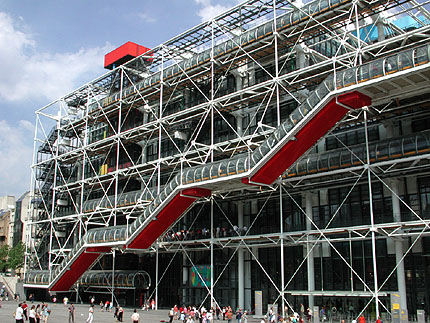
The Pompidou Centre was built in between 1971-1977 and was named after Georges Pompidou, President of the French Republic. The building holds within the Centre national d’art et du culture Georges Pompidou, the Musée mational d’art moderne, the Institut de recherche et de coordination acoustique-musique and Bibliothèque publique d’information. The designing team for the structure included Peter Rice besides architects, Richard Rogers and Renzo Piano. The building is pretentiously modern as compared to the surrounding historic buildings. (OUP, 2008) the designers used means which provided the long spans that were needed to support a heave library that was mobile anywhere in the building. Peter’s contribution is most notable in the use of cast steel for these pieces which was a result of his insistence and successfully fulfilled the purpose. (Lin & Danziger, 2008)
Lloyds of London
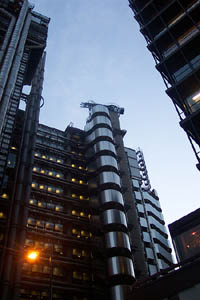
Afterwards, Rice worked on projects, with yet other architects. Another major Roger project in which he was involved in was Lloyds of London. This was completed in 1984 and suffered delays and problems like in 1980, it was apparent at one stage that its architects, engineers, and contractors were clearly not working in collaboration with each other. Arups also delayed in providing the structural solutions for the design due to sometimes prolonged agonizing about the engineering by Rice, it took an entire year to bring things back on track (Clerkin, 2008).
At the time that Rice was working on Lloyds of London, he was also working on other projects of which the Fleet guard Factory in France, and Stansted Airport in London is most notable. After completing the Pompidou Centre, Rice had also established his own practice called RPR and his partners were Martin Francis and Ian Ritchie. He also continued to work with Arups as a partner as a result of which his workload and output multiplied. Many of the works by RFR were based in Paris and include the ‘green house’ at La Villette and the tent-like canopy at La Défense. In 1985, he assisted I.M. Pei in his projects at the Louvre where he was responsible for engineering the shell structures for the glass roofs that turned it into internal spaces in the courtyard (Clerkin, 2008).
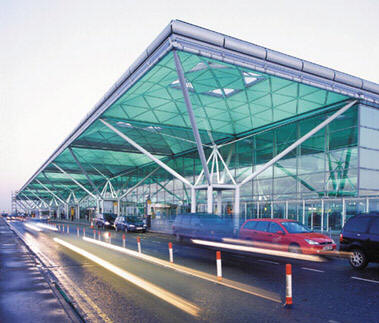
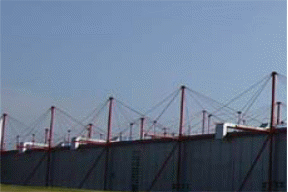
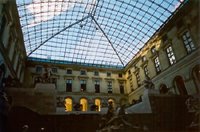
The essence of Rice’s work
The domain of his work was not limited within the traditional boundaries of structural engineering since he worked on almost anything to which his skills were applicable in a useful manner. The way he worked was informal and due to this he usually seen in multi-coloured jumpers rather than in a suit. He made use of visual memo pads which were created as a result of brain storming with his project team and scribbling of ideas in the A4 notebooks. His attitude towards work was very enthusiastic and he demanded dedicated support from his team to make sure that the ideas get through. He often required extra effort from his people but this was stimulated by elements of enocuragement and originality supplemented by his keeness to listen and warm humour. (Arup, n.d.)
Peter was well aware of the fact that it is the people who carried out his design structures and people for whom the end products were made; therefore in his approach, people lied at central position. His worked revolved as much around people, their abilities and perceptions, as it did around engineering. When it came to technology, pushing his his fascination beyond the boundaries of technology was of great important. In his work, he looked for opportunities of incorporating new materials, techniques or structural forms as he believed that innovative solutions were better and safer than code-based designs since they were more thoroughly tested. (Arup, n.d.)
Much of Peter’s work was influenced by the Victorian engineers as he looked into the structural engineering history for obtaining inspiration. The reason his work was influenced by Victorian engineers was that he found their presence evident in the form of the earlier structures that they made. Their construction reflected their personality through the materials that they chose, the manner in which they detailed the joints and the way of overall construction and fabrication (Lin & Danziger, 2007).
Rice was genius who was trusted to create design possibilities; this is not anywhere close to the idea that engineering is merely about enacting what is required of it. The part played by the engineering of Rice was as important as the part played by a designer in the construction of a building. Rice was often called an “Architect Engineer,” which he acknowledged, yet resisting it as a ‘flawed definition’ on the basis of the justification that basic differences lie between the jobs and processes performed by a designer and an engineer. According to Rice, the work of designers is subjective wherein it comes essentially from within them where they are merely responding the challenge posed by a design by understanding the way in which to respond to the main elements of the problem and its context. At the other end, Rice perceives that an engineer transforms a design challenge in such a manner that it may be objectively tackled. For instance in the Lloyd’s of London building, the essence lied in the properties and use of concrete and the job of the engineer was to do his best in making the structure an expression using concrete (Curry, 2008).
There are basically three themes that are evident in the work of Peter Rice. Firstly, the use of structural forms and materials in an innovative manner where they are used to express architectural ideas, collaborations with other great architects that were creatively strong and lastly, the ability and success in challenging the building industry in a manner that went beyond conventional boundaries (Lin & Danziger, 2007).
Engineering as viewed by Rice
The approach of Rice towards structural engineering enhances the understanding towards the role of an engineer. As mentioned above that Rice perceived engineering to be more of an objective nature, it requires the art and the ability for setting limits and appropriately framing the problem. Consequently, according to Rice, the objective focus usually receives solutions that are completely formed after a certain period of reflection. According to Rice engineers are given training to starting thinking in terms of constraints rather than solutions and application of successive constraints is made until only possible solution comes up which contributes equally in the solution which is implied by these constraints. According to Rice, even though constraints do eventually play an important part, rarely a few visual designers focus on them unless they have explored possibilities. This implicates the use of “funnel” approach where a broad brainstorm is later filtered down. Sometimes, engineers are also bestowed with tasks of working towards subjective requirements. For instance, in the creation of floor trusses for Pompidou center, the solution had to be not only sound in structural terms, appropriate in use weight, but it had to be visually appealing in a manner that would allow the entrance of more light through rather than a design which even though, had equivalent strength but conveyed greater visual bulk. In this aspect, subjectivity lies in perception of end user and this is needed in visual designers in a way that cost consideration is needed by engineers (Curry, 2008).
“An engineer imagines”
‘An engineer imagines’ is the autobiography of Peter Rice brilliantly written at the end of his career. The book gives a considerate perspective towards the role of an engineer who operates closely to visual (or in case of Rice, architectural) designs. The book is among the few which successfully conveys a retrospective wisdom and clarity in a manner which could only be achieved at the end of a life like that of the writer-Rice, such is a life that is found to be full of continuous learning, investigation and learning at the very border of such a profession (Curry, 2008).
According to RSA Journal, the book is “a worthy memorial to a gifted man who died far too young”. (Amazon, n.d.)
Achievements
Due to his outstanding works, Peter Rice was given various honors and awards in his lifetime which marked his achievement. He was not only a Member of the Royal Institute of Architects Ireland but also an Honorary Fellow of the Royal Institute of British Architects. His greatest accomplishment was the RIBA Gold Medal with which he was awarded in 1992 by the Royal Institute of British Architects. He is the second engineer who received the award after Ove Arup and Renzo Piano, as well as the second Irishman to be honored with it after Michael Scott. This medal was inaugurated in 1948 by Queen Victoria and is conferred to an architect or person who can be distinguished on the basis of his/her work which directly or subtly promoted the advancement of architecture. After his death in 1992, Peter Rice Prize was created by Harvard in 1994 with the objective to honor those students whose work echo the innovation of Rice (Arup, n.d.).
Testimonials
Peter Rice earned a reputation for becoming known among the most creative engineers who existed in his generation, and even a long time after his death, is still remembered with respect and warmth. His longest collaboration in work over several years was with Renzo Piano, according to him, “Peter Rice is one of those engineers who has greatly contributed to architecture, reaffirming the deep creative interconnection between humanism and science, between art and technology,” Piano also acknowledged the contribution made my Peter Rice to the bonding of the architectural art to the reality of life, science and modernity. Rogers found in Rice “a sense of inner peace” which he found reflecting in all his work (Clerkin, 2008).
Conclusion
An engineer is meant to introduce innovations that provide means of supporting the creativity of architects. Peter was a structural engineer who placed a lot of effort pondering over his projects and their possibilities as a result his projects had the most amazing designs for which he was recognized. He introduced innovations through his work which paved the way and opened new gates of idea of others who followed him. He contributed to the society through his works which form a strong connection between science and humanism; technology and art.
His legacy lies in building the environment which is visible through his engineered structures specially the ones that were done with the efforts of multiple collaborators. Peter Rice was a genius whose analytical tools and selection of designs made great contribution towards public enjoyment and remarkable structures for the society.
His work is among one of the greatest that were created and will remain that way in the times to come; such has also been acknowledged by other great architects and through the different honors and awards that he had been bestowed with.
Major Chronological Events
1935- Year of birth
1956- Joined Arup
1957-1958- went to Imperial college
1959- Started construction of Sydney Opera House
1968- Returned to Arup from USA
1971- Won competition announced by French Government for Centre of Paris
1971-1977- construction of Pompidou centre
1977- Started RPR
1984- Completed construction of Lloyds of London
1985- Worked on Louver in Paris
1992- Awarded RIBA
1992- Completed autobiography “an engineer imagines”
1992- Died due to brain tumor
References
- Amazon, n.d., “An engineer imagines”, Web.
- Arup, n.d., “Peter Rice (1935 – 1992)”.
- Brown, A. 2001, “Peter Rice (Engineer’s Contribution to Architecture)”, Web.
- Clerkin, P. 2008, “Architects of Ireland – Peter Rice, Engineer (1935-1992)”
- Curry, I. 2008, “Asking the beautiful question: design and engineering”
- EA, n.d., “Structural engineering- a definition”.
- Lin, N & Danziger, B. 2001, “The imaginative engineer-Peter Rice”.
- OUP, 2008, “The Pompidou Centre”